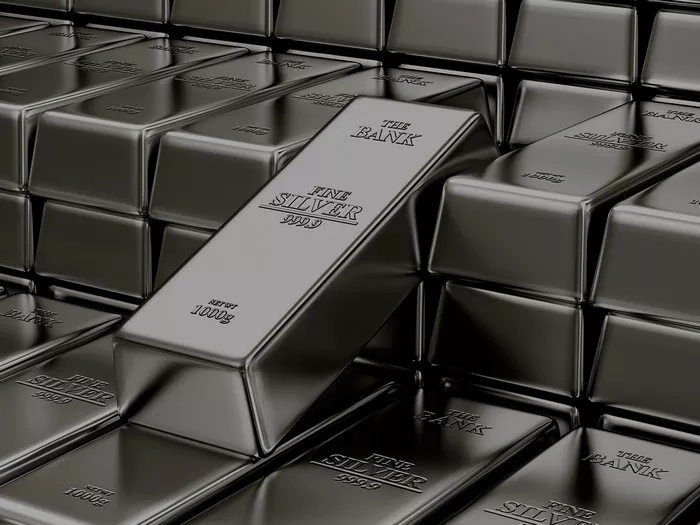Silver, often considered the “poor man’s gold,” has historically been a valuable commodity sought after for its numerous industrial, investment, and decorative uses. However, in recent times, its price has been on a downward trend, leaving investors and analysts puzzled. In this comprehensive guide, we’ll delve into the factors behind the decline in silver prices, analyzing various economic, geopolitical, and market dynamics influencing this precious metal.
Understanding Silver Market Dynamics
Before dissecting the reasons behind silver’s price decline, it’s crucial to grasp the fundamental dynamics of the silver market. Unlike gold, which is primarily driven by investment demand and considered a safe-haven asset, silver has a dual role as both a precious metal and an industrial commodity. Approximately 50% of silver’s demand comes from industrial applications, including electronics, solar panels, and medical instruments. Thus, fluctuations in industrial activity, technological advancements, and shifts in global manufacturing trends significantly impact silver prices.
Factors Contributing to the Decline in Silver Prices
1. Global Economic Slowdown: One of the primary drivers behind the recent decline in silver prices is the sluggish global economic growth. Economic slowdowns, particularly in major economies like China and the Eurozone, have dampened industrial demand for silver. Reduced manufacturing activity and lower consumer spending directly translate into lower demand for electronics, automobiles, and other goods that utilize silver, thereby exerting downward pressure on its price.
2. Strength of the US Dollar: The US dollar, being the world’s primary reserve currency, has an inverse relationship with commodity prices, including silver. When the dollar strengthens, commodities priced in dollars become more expensive for holders of other currencies, leading to lower demand and, consequently, lower prices. The US Federal Reserve’s monetary policy decisions, interest rate changes, and macroeconomic indicators influence the dollar’s strength, thereby impacting silver prices inversely.
3. Rising Interest Rates: Silver, like other commodities, competes with interest-bearing assets such as bonds and savings accounts for investor capital. When interest rates rise, fixed-income investments become more attractive relative to commodities, leading investors to reallocate their portfolios away from silver and into interest-bearing assets. Consequently, higher interest rates can suppress investment demand for silver, contributing to its price decline.
4. Technological Advances and Substitution: Technological innovations and advancements in material science have led to the development of alternative materials that can replace silver in various industrial applications. For instance, advancements in semiconductor technology have reduced the demand for silver in electronics manufacturing. Similarly, the increasing efficiency and affordability of alternative energy sources have diminished the demand for silver in solar panel production. Such technological substitutions can weaken the demand for silver and exert downward pressure on its price.
5. Speculative Trading and Market Sentiment: The silver market, like other financial markets, is influenced by speculative trading and market sentiment. Investor perceptions, market rumors, and speculative trading activities can lead to short-term price fluctuations that may not necessarily reflect underlying supply and demand fundamentals. Negative sentiment, driven by concerns over economic uncertainty, geopolitical tensions, or speculative selling, can exacerbate downward price pressure on silver.
6. Supply Dynamics and Mining Output: Although industrial demand plays a significant role in determining silver prices, supply dynamics cannot be overlooked. Silver is primarily mined as a byproduct of base metal mining, such as copper, lead, and zinc. Fluctuations in base metal prices and mining output can indirectly impact silver supply. Additionally, recycling and scrap supply also contribute to the overall availability of silver in the market. Any disruptions or changes in mining output or recycling rates can affect the supply-demand balance and, consequently, silver prices.
7. Investor Sentiment and Market Psychology: Investor sentiment and market psychology play a crucial role in shaping silver prices. Bullish or bearish sentiments can be driven by a myriad of factors, including economic indicators, geopolitical events, and central bank policies. Positive sentiment, fueled by optimism about economic growth or concerns about inflation, can drive investor demand for silver as a hedge against currency depreciation and inflationary pressures. Conversely, negative sentiment can lead to selling pressure, driving prices lower.
Conclusion
The decline in silver prices can be attributed to a combination of factors, including weak industrial demand, strength of the US dollar, rising interest rates, technological advancements, speculative trading, supply dynamics, and investor sentiment. While short-term fluctuations in silver prices are inevitable, long-term investors should focus on understanding the underlying supply-demand dynamics and macroeconomic trends shaping the silver market. Additionally, diversification and risk management strategies can help investors navigate the volatility inherent in commodity markets and achieve their investment objectives over the long term.


